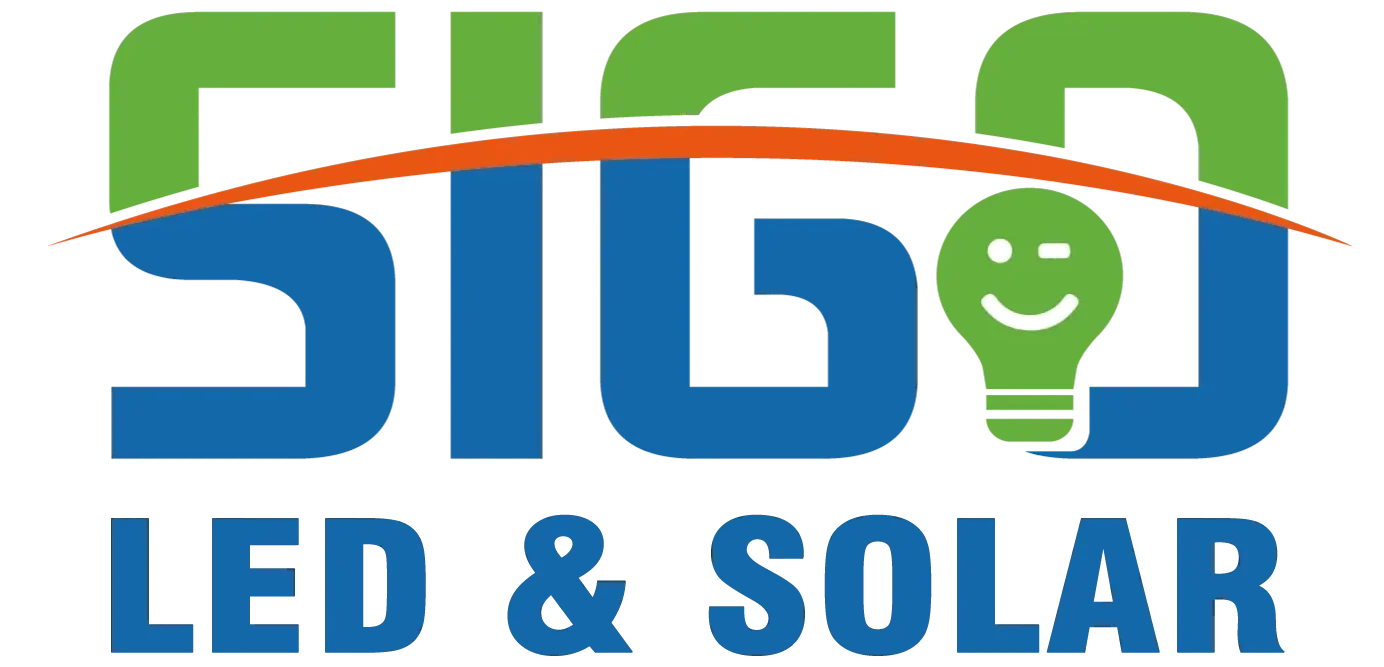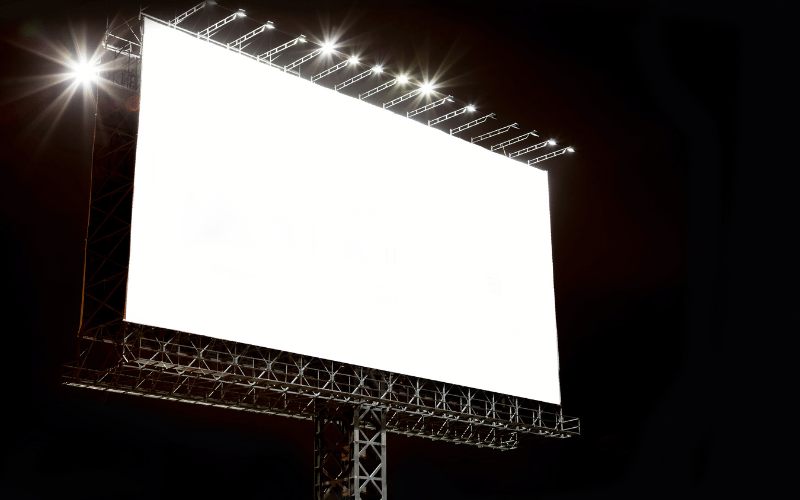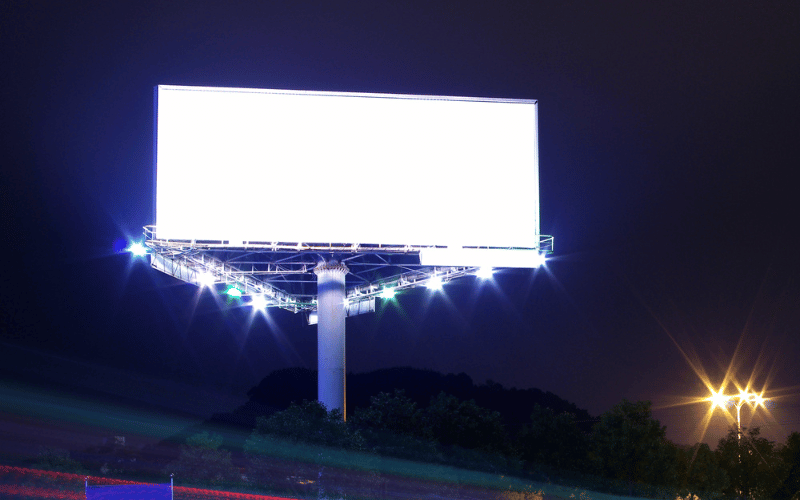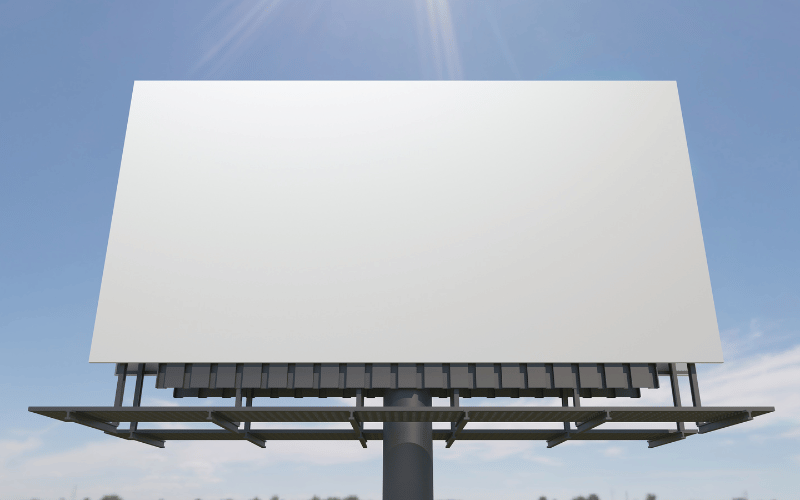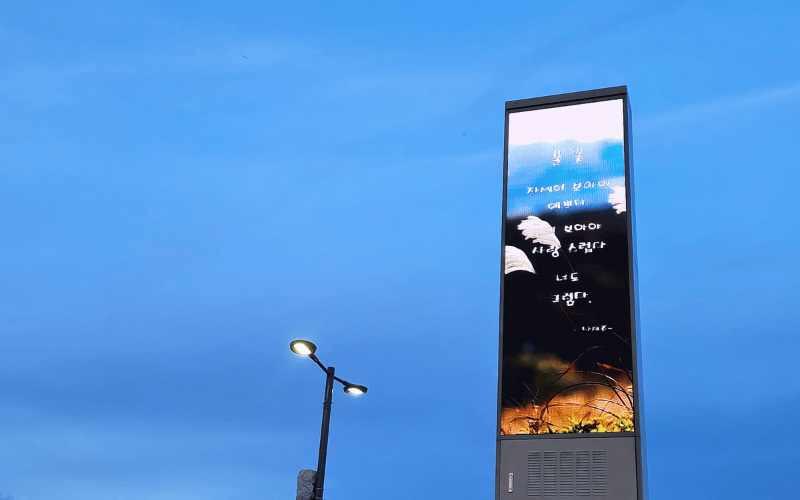In the world of outdoor advertising, effective lighting is the unsung hero that ensures billboards and signage achieve their purpose—capturing attention and delivering impactful messages. Whether it’s a brightly lit billboard guiding drivers on a rural highway or a glowing sign standing out amidst the urban hustle, proper illumination is key to visibility, brand recognition, and safety. With advancements in LED and solar-powered technologies, businesses now have access to energy-efficient, durable, and sustainable lighting solutions that not only enhance the visual appeal of their signage but also align with modern eco-conscious practices. This article explores the transformative role of LED and solar lighting in billboard illumination, highlighting their benefits, applications, and future potential.
Table of Contents
ToggleIntroduction to Billboard Lighting
Why Proper Lighting is Essential for Effective Signage Visibility and Impact
Proper lighting is crucial for ensuring that billboards and signage achieve their primary goal—capturing attention and delivering a clear message. Without adequate lighting, even the most creative designs can fade into the background, especially at night or in low-light conditions.
For example, a billboard on a busy highway equipped with LED floodlights can grab the attention of drivers from a distance, ensuring the message is seen even at high speeds. In urban areas with competing light sources, brighter LED fixtures can help signage stand out, making it more noticeable in crowded environments.
Effective lighting not only enhances visibility but also ensures that the message remains legible regardless of the time of day or weather conditions. Additionally, well-lit signage conveys professionalism, creating a polished and trustworthy image that can positively influence how a brand is perceived.
The Importance of Effective Sign Lighting
Well-lit signage provides several practical benefits that extend beyond just visibility:
- Increased Visibility: Proper lighting ensures that signage is easily seen from a distance, even in challenging conditions like fog, rain, or heavy traffic. For instance, a brightly lit billboard on a rural highway can guide drivers to nearby services or attractions.
- Enhanced Brand Recognition: A well-lit sign keeps logos, slogans, and visuals prominent at all times, reinforcing brand identity. For example, a retail store with an illuminated sign can remain top-of-mind for potential customers, even after business hours.
- Improved Safety: Illuminated signage can contribute to safer environments by reducing the risk of accidents. A brightly lit billboard along a dark road not only highlights the advertisement but also improves overall visibility for drivers, helping them navigate safely.
By investing in high-quality lighting solutions, businesses can maximize the impact of their signage, ensuring it captures attention, communicates effectively, and leaves a lasting impression on its audience.
Understanding LED and Solar Billboard Lighting
Overview of LED Sign Technology
LED technology has transformed billboard lighting by delivering superior brightness, energy efficiency, and durability. LEDs (light-emitting diodes) produce vibrant, consistent light that ensures signage remains visible in all conditions, including nighttime and adverse weather.
For example, a 300-watt LED floodlight can illuminate a 40×40-foot billboard with uniform brightness, even during heavy rain or fog. Unlike traditional bulbs, LEDs emit light directionally, reducing wasted energy and focusing illumination directly on the billboard.
Additionally, LED lights last significantly longer than conventional options, often exceeding 50,000 hours of use. This longevity minimizes the need for frequent replacements, making them a cost-effective choice for businesses. Their ability to operate efficiently in extreme temperatures—whether in freezing winters or scorching summers—further enhances their reliability for outdoor signage.
Benefits of Outdoor Signage Lighting
Outdoor signage lighting offers several practical advantages that make it essential for effective advertising:
- Energy Savings: LED and solar lighting systems consume far less energy than traditional lighting. For instance, replacing a 500-watt halogen bulb with a 100-watt LED can reduce energy consumption by up to 80%, significantly lowering electricity costs.
- Weather Resistance: Modern outdoor lighting fixtures are built to withstand harsh conditions, including rain, snow, and extreme heat. This ensures consistent performance year-round, even in challenging environments.
- Low Maintenance: With their long lifespans and durable construction, LED and solar lights require minimal upkeep. For example, a solar-powered LED system can operate for years with only occasional cleaning and battery checks.
- Enhanced Visibility: Bright, evenly distributed light ensures that billboards remain clear and legible, even from a distance or in low-light environments. A well-lit billboard on a busy highway can capture attention quickly, ensuring the message reaches its audience.
These benefits make outdoor lighting a practical and sustainable solution for businesses looking to maximize their advertising impact.
Types of Billboard Light Fixtures
Billboard lighting fixtures come in various types, each suited to specific applications:
- Floodlights: These fixtures provide wide, even illumination, making them ideal for large billboards along highways or in open spaces. For example, a 120-degree floodlight can cover a 50×50-foot area with consistent brightness.
- Spotlights: Spotlights focus light on specific areas, making them perfect for highlighting smaller signs or emphasizing key design elements like logos or taglines.
- Linear LED Fixtures: These long, narrow lights distribute light evenly across the length of a billboard, ensuring consistent brightness for rectangular or panoramic signs.
- Solar-Powered Lights: Solar fixtures use renewable energy, making them an eco-friendly option for outdoor signage. They are especially useful in remote areas without access to electricity, such as rural highways or off-grid locations.
Choosing the right fixture depends on the size, location, and specific lighting needs of the billboard.
Traditional vs. Energy-Efficient LED Fixtures
When comparing traditional lighting to energy-efficient LED fixtures, the differences in cost, performance, and environmental impact are significant:
- Cost: While traditional fixtures may have a lower upfront cost, LEDs save money in the long run due to their energy efficiency and reduced maintenance needs. For example, a business can save hundreds of dollars annually by switching from halogen to LED lighting.
- Performance: LEDs provide brighter, more consistent light and can be customized for different color temperatures, enhancing the visual appeal of signage. Traditional bulbs often dim over time, reducing their effectiveness.
- Environmental Impact: LEDs consume less energy and have a smaller carbon footprint compared to traditional lighting. Solar-powered LED options further reduce environmental impact by utilizing renewable energy, making them a sustainable choice for eco-conscious businesses.
Switching to energy-efficient LED fixtures not only improves the quality of billboard lighting but also aligns with sustainable business practices, helping businesses save money while reducing their environmental impact.
Solar-Powered Billboard Lighting
Features of Solar Billboard Light Fixtures
Solar billboard light fixtures are designed to operate independently of the electrical grid, using renewable energy to power their components. Key features include:
- Solar Panels: High-efficiency monocrystalline solar panels can generate up to 20% more energy compared to polycrystalline panels, making them ideal for areas with limited sunlight. For example, a billboard in a shaded urban area can still achieve optimal energy generation with the right panel type and placement.
- Batteries: Solar systems store energy in rechargeable batteries, such as lithium-ion batteries, which are known for their durability and long lifespan of up to 10 years. These batteries ensure the lights function reliably during nighttime or low-sunlight conditions.
- LED Lamps: LED lights are the preferred choice for solar systems due to their energy efficiency and bright, consistent illumination. For instance, a 100-watt LED lamp can provide the same brightness as a 500-watt traditional bulb while consuming significantly less power.
- Control Systems: Many solar fixtures include smart controllers that regulate energy usage, adjust brightness based on traffic patterns, and manage charging cycles to optimize performance. Some systems even feature motion sensors to activate lights only when vehicles approach, conserving energy further.
These components work together to provide reliable, eco-friendly lighting for billboards in any location, from urban centers to remote highways.
Comparative Analysis of Lighting Technologies: Solar vs. Traditional Lighting
When comparing solar-powered lighting to traditional grid-connected systems, several factors highlight the advantages of solar technology:
- Cost: While solar systems have a higher initial investment, they eliminate electricity bills and reduce long-term operational costs. For example, a solar-powered billboard in a remote area can save thousands of dollars by avoiding the need for extensive grid infrastructure.
- Efficiency: Solar lighting systems use LED technology, which is more energy-efficient than traditional bulbs. Additionally, solar panels generate power directly from sunlight, reducing energy waste. A single solar panel can power multiple LED fixtures, making it a cost-effective solution.
- Sustainability: Solar lighting relies on renewable energy, significantly lowering its environmental impact. Traditional systems, often powered by fossil fuels, contribute to carbon emissions, whereas solar systems align with sustainability goals.
- Installation Flexibility: Solar lights can be installed in off-grid locations, such as rural highways or mountainous regions, without requiring expensive wiring or grid access. This flexibility makes them ideal for areas where traditional systems are impractical.
Solar-powered lighting offers a sustainable and cost-effective alternative to traditional options, especially for outdoor applications like billboards.
Advantages of Solar-Powered Billboards
Solar-powered billboards provide several practical benefits that make them an attractive choice for businesses:
- Energy Independence: Solar systems operate independently of the electrical grid, ensuring reliable performance even during power outages. For example, a solar-powered billboard in a storm-prone area can continue functioning when grid power is unavailable.
- Reduced Operational Costs: By eliminating electricity bills and minimizing maintenance needs, solar lighting significantly lowers long-term expenses. Businesses can save thousands annually by switching to solar-powered systems.
- Eco-Friendly Solution: Solar-powered systems reduce reliance on non-renewable energy sources, helping businesses meet sustainability goals and improve their environmental footprint.
- Remote Accessibility: Solar lights can be installed in off-grid locations, making them ideal for billboards in rural or hard-to-reach areas. For instance, a solar-powered billboard along a desert highway can operate without any grid connection.
- Low Maintenance: With durable components like LED lamps and weather-resistant batteries, solar systems require minimal upkeep. Regular cleaning of solar panels and occasional battery checks are often sufficient to keep the system running efficiently.
These advantages make solar-powered billboards a practical and sustainable solution for outdoor advertising, especially in areas with limited infrastructure.
How Solar Billboard Lights Work
Solar billboard lights operate through a straightforward process that ensures consistent illumination:
- Energy Collection: During the day, solar panels absorb sunlight and convert it into direct current (DC) electricity. For example, a 200-watt solar panel can generate enough energy to power multiple LED lights for an entire night.
- Energy Storage: The generated electricity is stored in rechargeable batteries, such as lithium-ion or lead-acid batteries, ensuring power is available for nighttime use. Advanced systems use smart controllers to optimize charging cycles and prevent overcharging.
- Lighting Activation: As daylight fades, a built-in sensor detects the drop in ambient light and automatically turns on the LED lamps. Some systems also adjust brightness based on traffic patterns or environmental conditions.
- Energy Usage: The stored energy powers the LED lights throughout the night, providing bright and consistent illumination. For example, a solar-powered billboard can remain lit for up to 12 hours on a single charge.
- Recharging Cycle: The system resets at sunrise, with the solar panels resuming energy collection to recharge the batteries. Self-cleaning solar panels can further enhance efficiency by preventing dust and debris buildup.
This self-sustaining process ensures that solar billboard lights remain functional and efficient, even in areas with limited infrastructure or challenging weather conditions.
Installation and Integration
Installation Considerations for Solar Lighting
Proper installation of solar lighting ensures optimal performance and longevity. Here are key factors to consider:
- Site Selection: Choose a location with maximum sunlight exposure throughout the day. For example, in urban areas, avoid placing solar panels near tall buildings or trees that could cast shadows and reduce efficiency.
- Panel Placement: Position solar panels at an angle that maximizes sunlight absorption based on your geographic location. In northern regions, a tilt angle of 30-40 degrees is ideal for capturing sunlight during winter months.
- Battery Placement: Install batteries in a weatherproof enclosure to protect them from extreme temperatures and moisture. For instance, in desert climates, ensure the enclosure is insulated to prevent overheating.
- Maintenance Access: Ensure the system is easy to access for cleaning and maintenance. For example, billboards in dusty or coastal areas may require more frequent cleaning to remove dirt or salt buildup on solar panels.
By following these tips, you can maximize the energy output and reliability of your solar lighting system, even in challenging environments.
Integrating LED Sign Lighting with the Electrical Grid
Integrating LED sign lighting with the electrical grid can provide additional reliability and flexibility. Here’s when and why you might consider a grid-tied system:
- When to Use Grid-Tied Systems: Grid integration is ideal for locations with inconsistent sunlight or high energy demands that exceed solar capacity. For example, a shopping mall’s signage may require grid backup during peak hours or cloudy days.
- Why Consider Grid Integration: A grid-tied system allows you to use solar energy as the primary power source while relying on the grid as a backup. Installing a smart meter can help monitor energy usage and optimize the balance between solar and grid power.
Grid-tied systems are especially useful for businesses that require dependable lighting for critical signage or high-traffic areas, ensuring uninterrupted performance.
Grid-Tied LED Lighting Solutions
Connecting LED lighting systems to the electrical grid offers several benefits:
- Backup Power: Grid-tied systems ensure continuous operation during periods of low solar energy production, such as during storms or extended cloudy weather. For example, a coastal billboard can maintain visibility even during overcast conditions.
- Energy Savings: By using solar energy during the day and grid power only when necessary, businesses can significantly reduce electricity costs. A hybrid system can cut energy expenses by up to 50%.
- Scalability: Grid-tied systems can easily accommodate additional lighting fixtures or increased energy demands without requiring major upgrades. For instance, expanding a billboard network in a city becomes more feasible with a grid-tied setup.
These solutions provide a reliable and cost-effective way to power LED signage while leveraging the benefits of solar energy.
Benefits of Hybrid Systems
Hybrid systems combine solar power with grid electricity, offering the best of both worlds. Here’s why they’re a smart choice:
- Reliability: Hybrid systems ensure uninterrupted lighting by switching seamlessly between solar and grid power as needed. For example, a highway billboard can rely on solar energy during the day and switch to grid power during extended rainy periods.
- Energy Efficiency: Solar energy powers the system during the day, while grid electricity serves as a backup, minimizing overall energy consumption. Smart controllers can prioritize solar usage to further reduce grid reliance.
- Cost Savings: By reducing reliance on grid power, hybrid systems lower electricity bills while maintaining consistent performance. Businesses can save thousands annually by adopting hybrid setups.
- Sustainability: Hybrid setups reduce carbon emissions by prioritizing renewable solar energy over traditional power sources. This makes them an eco-friendly choice for businesses aiming to meet sustainability goals.
Hybrid systems are ideal for businesses seeking a balance between sustainability, reliability, and cost-effectiveness.
Challenges of Electrical Integration
Integrating lighting systems with the electrical grid or solar power can present some challenges. Here’s how to address common issues:
- Voltage Compatibility: Ensure that the lighting system’s voltage matches the grid or solar power output to prevent damage or inefficiency. For example, use voltage regulators to stabilize power in areas with fluctuating grid supply.
- Wiring Complexity: Grid-tied and hybrid systems often require more complex wiring. Work with a qualified electrician to ensure proper installation and compliance with safety standards. In remote areas, protect wiring from wildlife to prevent damage.
- Energy Storage Limitations: Batteries in solar systems may have limited storage capacity. Monitor energy usage and consider upgrading to higher-capacity batteries if needed. For instance, lithium-ion batteries are a good choice for high-demand systems.
- Weather Impact: Extreme weather can affect both solar panels and grid infrastructure. Use weather-resistant components, such as corrosion-resistant mounts in coastal areas, and plan for backup solutions like surge protectors to maintain reliability.
By addressing these challenges proactively, you can ensure a smooth and efficient integration process for your lighting system, regardless of location or environmental conditions.
Future of Billboard Lighting
Future Trends in Outdoor Sign Lighting
The outdoor sign lighting industry is evolving rapidly, driven by advancements in technology and changing consumer demands.
- Smart Lighting Systems: These systems use sensors and IoT (Internet of Things) technology to adjust brightness based on ambient light levels, reducing energy consumption while maintaining visibility. For example, urban billboards are already adopting smart systems that dim during late-night hours to reduce light pollution and energy costs.
- Dynamic Lighting Effects: Businesses are increasingly using programmable LED systems to create animations, color changes, and patterns that make signage more engaging. For instance, event promotions often use dynamic lighting to grab attention and create a sense of urgency.
- Wireless Control Systems: These systems allow users to manage lighting remotely via smartphone apps or cloud-based platforms. A retail chain, for example, can adjust billboard brightness or switch designs in real time to match promotions or weather conditions.
These trends are making outdoor signage more interactive, energy-efficient, and adaptable to changing needs.
Innovations in Energy-Efficient Lighting
Energy-efficient lighting continues to advance, with groundbreaking developments in both LED and solar technologies:
- Micro-LEDs: These tiny, highly efficient diodes deliver brighter light with lower energy consumption, making them ideal for high-resolution displays and intricate designs. For example, Micro-LEDs are being tested in high-traffic areas like Times Square, where their brightness and efficiency can handle the demands of 24/7 operation.
- Bifacial Solar Panels: These panels capture sunlight from both sides, increasing energy generation. Businesses can pair them with reflective surfaces to maximize energy capture, even in shaded locations.
- Advanced Battery Technologies: Solid-state batteries are improving energy storage capacity and lifespan, ensuring reliable performance even in low-sunlight conditions. For instance, a solar-powered billboard in a cloudy region can now operate efficiently with these advanced batteries.
These innovations are making energy-efficient lighting more accessible and practical for businesses of all sizes.
Sustainable Practices for Billboard Lighting
Sustainability is becoming a priority in billboard lighting, with businesses adopting eco-friendly practices to reduce their environmental impact:
- Recyclable Materials: Many companies are switching to recyclable materials like aluminum and glass for their lighting fixtures. For example, a major retail chain recently transitioned to aluminum fixtures, reducing waste and cutting costs on materials.
- Off-Grid Solar Systems: By relying entirely on renewable energy, these systems eliminate the need for fossil fuels and reduce carbon emissions. A solar-powered billboard along a rural highway can operate independently, saving up to 70% on energy costs annually.
- Adaptive Lighting Controls: These controls dim or turn off lights during low-traffic hours, conserving energy without compromising visibility. For instance, billboards in suburban areas can reduce brightness after midnight to save energy.
- Carbon Offset Programs: Businesses are exploring carbon offset initiatives to balance the environmental impact of their lighting systems, further contributing to sustainability goals.
These practices not only reduce environmental impact but also align with consumer expectations for eco-friendly business operations.
Predictions for Solar LED Technology
Solar LED technology is expected to become even more advanced and accessible in the coming years:
- Flexible Solar Panels: These lightweight, versatile panels are likely to gain popularity for curved or irregular billboard surfaces. For example, prototypes are already being tested for creative designs that were previously impossible with rigid panels.
- Self-Cleaning Solar Panels: Using nanotechnology, these panels can repel dust and debris, maintaining optimal efficiency with minimal maintenance. This is particularly useful for billboards in dusty or coastal areas.
- AI-Powered Energy Management Systems: These systems will optimize energy usage and storage based on real-time data. For instance, they could predict weather patterns to adjust battery charging and ensure uninterrupted performance during cloudy periods.
As costs for solar and LED technologies continue to decrease, more businesses will adopt these solutions, making solar-powered billboard lighting the standard for outdoor advertising.
Frequently Asked Questions
Q: What are the benefits of LED billboard lighting?
A: LED billboard lighting offers high performance, energy efficiency, and a long lifespan. These lights deliver uniform illumination, ensuring clear visibility for advertisements. With a lumen output of up to 5000K, they keep billboards brightly lit even in low-light conditions. Their durability and weather resistance make them ideal for outdoor use.
Q: How does solar billboard lighting work?
A: Solar billboard lighting uses solar panels to capture sunlight and convert it into electricity to power LED lights. This sustainable solution eliminates the need for electrical grid connections, making it perfect for off-grid locations. Solar-powered systems reduce energy consumption and maintenance costs, offering a cost-effective option for outdoor advertising.
Q: What are the mounting options for billboard lights?
A: Billboard lights can be mounted using brackets, knuckles, or adjustable fixtures. These options allow precise positioning to ensure even illumination across the billboard. The choice of mounting depends on the billboard’s size, location, and design requirements.
Q: What wattage is recommended for billboard lighting?
A: The recommended wattage depends on the billboard’s size and the desired brightness. High-wattage LEDs, such as 4ft LED modules, are commonly used to achieve bright and uniform illumination. Focus on the lumen output to ensure the lighting meets your visibility needs.
Q: How do I choose the right flood light fixture for my billboard?
A: When selecting a flood light fixture, prioritize lumen output, energy efficiency, and durability. Opt for high-quality fixtures with adjustable optics to achieve the desired brightness. Weather-resistant options are essential for outdoor use to ensure long-lasting performance.
Q: What is the lifespan of LED billboard lights?
A: LED billboard lights typically last over 50,000 hours, significantly reducing maintenance and replacement costs. Their durability and consistent high performance make them a reliable choice for outdoor advertising.
Q: Can I use neon lights for billboard illumination?
A: While neon lights offer a unique aesthetic, they are less energy-efficient than LEDs. LED lighting provides better illumination and lower energy consumption, making it a more sustainable choice. For a blend of style and efficiency, consider combining neon with LED lights.
Q: Are there energy-saving options for billboard lighting?
A: Yes, energy-saving options include LED fixtures, which consume less energy while delivering high brightness. Solar-powered systems further reduce electricity costs by using renewable energy. Dimmable lights also help manage power consumption by adjusting brightness based on ambient light conditions.
Conclusion
As the outdoor advertising industry evolves, LED and solar-powered lighting are setting new standards for efficiency, sustainability, and innovation. From energy savings and enhanced visibility to eco-friendly practices and cutting-edge technologies like smart controls and self-cleaning solar panels, these advancements are reshaping how businesses illuminate their signage. By adopting these solutions, companies can not only maximize the impact of their advertising but also contribute to a greener, more sustainable future. Whether it’s through hybrid systems, off-grid solar setups, or dynamic lighting effects, the future of billboard lighting is bright—literally and figuratively.
